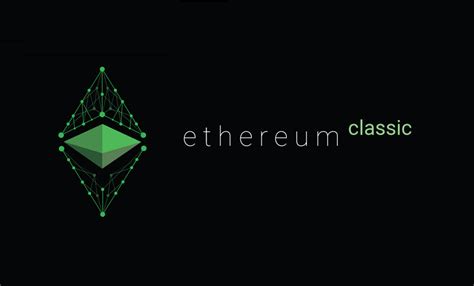The Influence of Ethereum Classic on Cryptocurrency Trading Strategies and Market Trends
Cryptocurrencies have been a hot commodity in the financial world for several years, with prices fluctuating wildly from one day to another. Among these cryptocurrencies is Ethereum Classic (ETC), a hard forked version of the original Ethereum protocol. As ETC’s market dynamics continue to evolve, it plays an increasingly significant role in shaping trading strategies and market trends.
What is Ethereum Classic?

Ethereum Classic is a decentralized application platform that allows users to create and deploy their own smart contracts on top of the Ethereum network. While Ethereum (ETH) is the original cryptocurrency and protocol, ETC is its hard forked version. This means that ETC uses a different set of rules and parameters than ETH, leading to significant differences in terms of transaction speed, block time, and scalability.
Market Trends and Trading Strategies
The market trends for ETC have been influenced by several key factors:
- Difficulty: The difficulty level of the Ethereum network affects the block reward and transaction fees. As the network’s difficulty increases, the reward for mining blocks decreases, leading to higher transaction fees. Similarly, as the difficulty decreases, the reward increases, making transactions more expensive.
- Network congestion: The growth in demand for ETC has led to increased network congestion, causing prices to fluctuate rapidly. This is particularly evident during periods of high market volatility or when there are significant changes in investor sentiment.
- Gas prices: Gas prices refer to the cost of executing transactions on the Ethereum network. As gas prices increase, it becomes more expensive for traders and investors to participate in the market.
Trading strategies that have benefited from these trends include:
- FIFO (First-In-First-Out) investing: This strategy involves holding ETC tokens for as long as possible before selling them off, taking advantage of higher transaction fees during congestion periods.
- Leveraged trading: Using borrowed funds to amplify trading positions has become increasingly popular among traders and investors seeking to ride out market volatility.
- Position sizing: Smaller position sizes have allowed some traders to profit from the increased demand for ETC tokens, making it easier for them to enter into profitable trades.
Market Sentiment
Market sentiment towards ETC is also influenced by various factors:
- Sentiment polls: Various online platforms and market research firms conduct regular sentiment polls on ETC’s popularity among investors.
- Social media buzz: Social media platforms, such as Twitter and Reddit, are often used to gauge public opinion on ETC’s performance.
- Industry news: News about the Ethereum ecosystem, including updates on the development of new features or the emergence of competing cryptocurrencies, can impact investor sentiment.
Conclusion
Ethereum Classic has become a significant player in the cryptocurrency market, with its influence extending far beyond traditional trading strategies and market trends. The differences between ETC and ETH have created unique opportunities for traders and investors to profit from these dynamics. As the market continues to evolve, it will be interesting to see how ETC’s position is affected by changes in investor sentiment and market conditions.
Key Takeaways
- Ethereum Classic (ETC) has a distinct set of rules and parameters that differentiate it from Ethereum (ETH).
- Market trends for ETC are influenced by factors such as difficulty level, network congestion, gas prices, and sentiment.
- Trading strategies that have benefited from these trends include FIFO investing, leveraged trading, and position sizing.